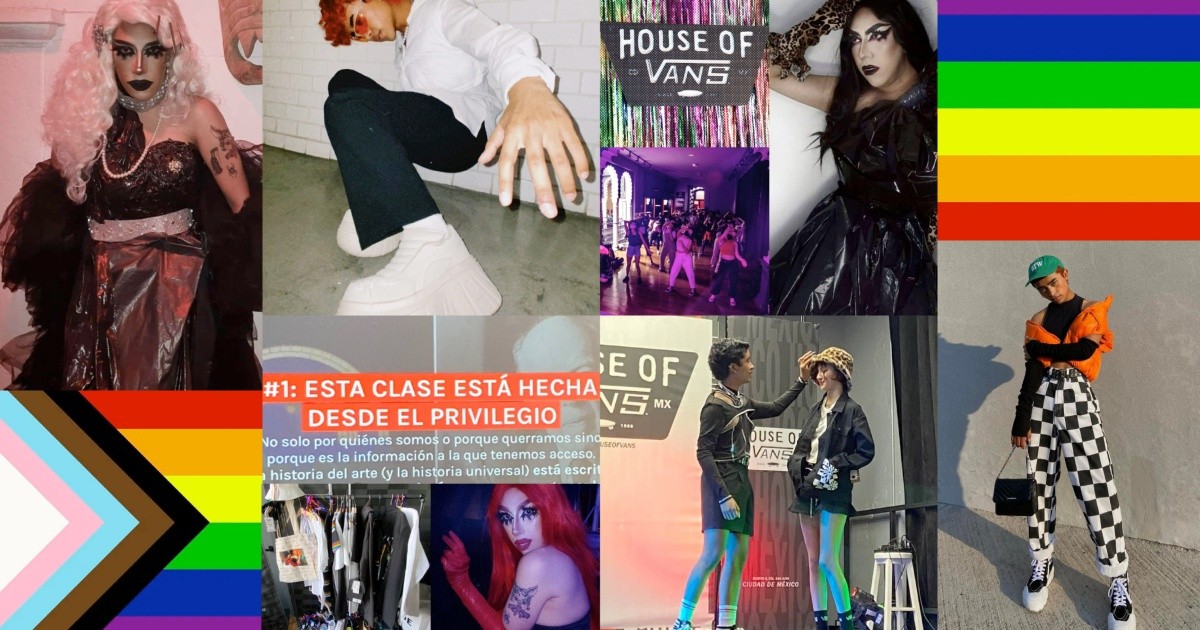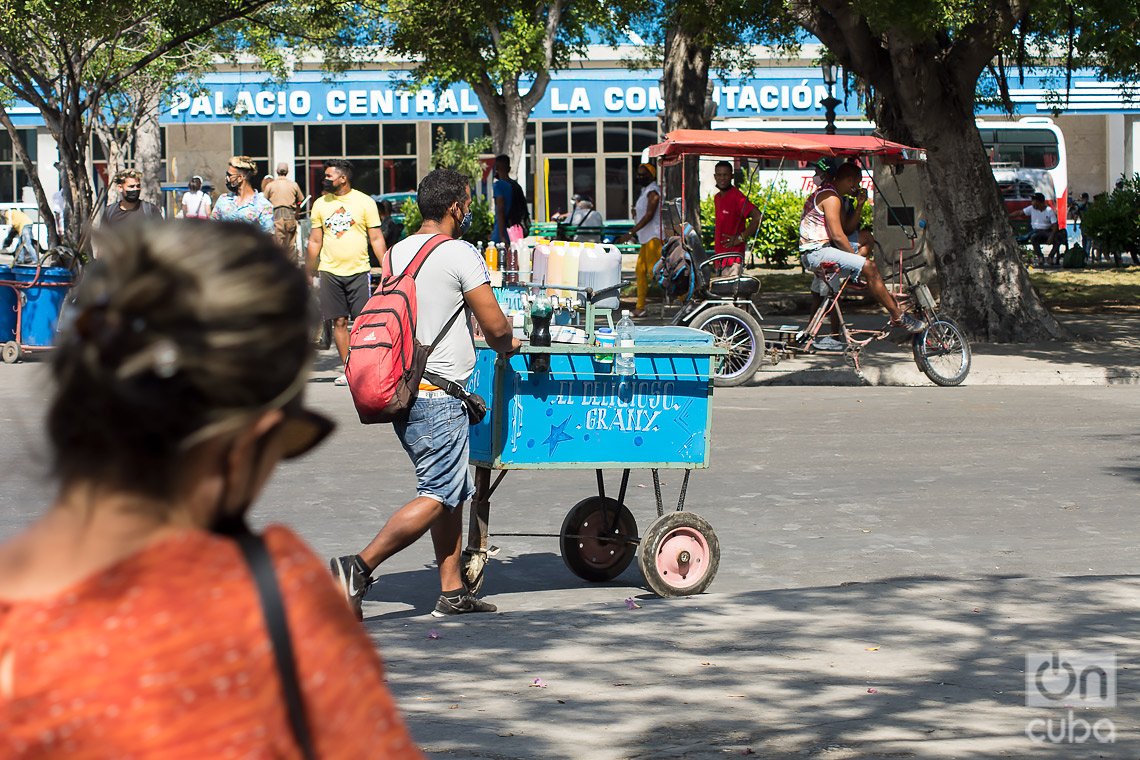On the way to the pride parade celebration, the Vans house filled its conference rooms and workshops around the LGBTTTIQA+ community by its initials: lesbian, gay, bisexual, transgender, transsexual, intersex, queer, asexual and more.
This space brings together art, music, culture and urban action sports, it is located on Calle de Rubens #6, it opened its doors for everyone, as it has done since December 9, 2021 in Mexico City.
Genderless styling by Eos Hunt
Eos, is a non-binary person, who communicates with neutral pronouns, studies styling, fashion design and fashion in general, is part of the Croom influencers agency. He is a model, he is 19 years old and he is a content creator on social networks.
A non-binary person is anyone who does not have a complete inclination with the masculine orientation or with the feminine orientation. Their behavior and dress is complemented by both genders.
Hunt gave a workshop in which he started with the importance of having personality and creativity, it was addressed to all the public interested in taking advantage of the closet they have, as well as discovering what they feel better with, speaking of clothing.
This workshop was one of the main ones among the list of activities. Eos dominates colorimetry, face and body silhouettes as well as the harmony that he can create with clothing on all body types.
The exercises that he demonstrated in the “Styling without gender” workshop, was to dress a man and a woman with basic garments that both could perfectly use and he added garments with textures, as well as non-traditional ways of wearing clothes, for example: a shirt buttoned up with a shirt over it and shorts or, in the case of women, a miniskirt with a top and a winter hat.
What stands out here is the possibility of being able to play with clothes regardless of age, as well as gender.

This workshop, taught by a person who belongs to the LGBTTTIQA+ community, allows us to find a world of possibilities when thinking, how are we going to dress the next day? or for some occasion, even in the words of Eos, he said that “everything is gradual, as a non-binary person I was faced with what is my mom going to say when she leaves my room dressed in a skirt? The reality is that little by little the people around you get used to it and on the street it is the real impact, but everything is gradual” as an invitation to dare to play with our clothes and not judge the clothes of others.
Art, the Queer world and Drag
The second most important conference inside the Vans house was the one given by Roberta Villarreal and Pablo Ávila, from Hablemos Arte. Roberta is a designer by profession, but history has always been her passion. She created an Instagram account called Let’s Talk Art. Such has been the growth in Roberta’s account and today she teaches art history courses through her page.
Pablo Ávila, also a designer and passionate about fashion, together with Roberta, has managed to team up and complement each other to share their knowledge of history, art and fashion. The talk they gave with full capacity in one of the largest rooms of the House of Vans was “The importance of the LGBTTTIQA+ community for art”.
A journey was made throughout history on the first confrontations or struggle for respect towards this community.
For Roberta Villarreal “Art serves to capture people’s stories”, this is how she gave rise to study works by artists from the community such as: the writer and poet Oscar Wilde, the Japanese feminist artist Yayoi Kusama, the artist street art activist Keith Haring and poet and playwright Salvador Novo, to name a few.
In the words of the speakers, without these key figures throughout history, the community would not have gotten as far as it has, with the step-by-step eradication of homophobia and everything in favor of equality and inclusion.
The importance of Queer art was mentioned, as well as the explanation that it is any person whose identity is outside the heteropatriarchal norm.
This art leads us to know other visions, so much so that these expressions have helped those who practice it to feel fulfillment in how they see themselves physically and identify themselves mentally. A clear and popular example is Frida Khalo, with her self-portraits when she dresses in a suit pretending to be a man.
This art helps us empathize, understand their struggles and their background and this gives rise to the art of Drag.
Drag Art describes any person who performs masculinity and femininity exaggerating gender aspects.
Khaar has been doing drag for four years. In the community she is known as “The Venus of the garbage” and she is a specialist in making clothes with garbage bags. She uses recycled materials, foam, cardboard and this makes her punk side stand out in his performance.

For Solórzano, “drag is a form of artistic expression, in which I involve other disciplines such as costumes, makeup and performance, with the creation of a character and skills. It’s always about representing something, whether it’s doing a show or fashion.”
He is a designer by profession and is dedicated to illustration. Since he was a child he has been passionate about the world of terror, his favorite mythical creatures are mermaids, blood, golden cinema and old Hollywood.
“Since I was little I saw mermaids as a genderless but monstrous creature, the idea of mermaids has always fascinated me. They take the form that the sailor wishes to enchant and be devoured. Precisely this idea when it came to learning about drag, I tried to turn it from paper to reality. My role is a creature that plays between genders, sometimes it can be a girl completely, sometimes a woman and a creature, or sometimes a vampire or a monster, but always with a supernatural element,” said Khaar.
The art of Drag was born in the 19th century, it began in the United Kingdom in Victorian Burlesque shows and little by little it began to gain strength and expansion in night bars with shows for the LGBT community, and such has been its growth that now the Drag art can also be found outside the night show such as in children’s books, in galleries and even in entertainment television series where all the artistic ability that anyone who wants to practice it must have is reflected. It involves acting, makeup, creativity, persistence and gender perspective.
“Drag is for everyone, it has no gender or rules, the important thing is to enjoy it and succeed at night and it is very gratifying to see that drag is going beyond the niche of the bar. Although it has been developed mainly in bars and clubs, now we can find it in galleries, in stories and it is not an art for nightlife, we just have to have fun and respect each other”, concluded Khaar Solórzano.
The LGBTTTIQA+ community is becoming more and more present and more clothing, tennis, food, cleaning and even beverage brands join the pride celebration. It is very important to know who is uploaded for marketing and who really is interested in everyone being part of their market or their consumers, the goal will always be respect for and for everyone.








